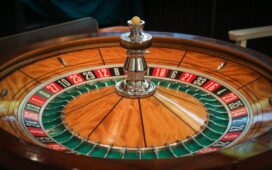The world of gambling and mathematics share an intricate connection that goes far beyond the spinning roulette wheel or the shuffle of a deck of cards. One fascinating aspect of this relationship is the concept known as the “Gambler’s Ruin.” In this article, we will unravel the threads of this mathematical tapestry, exploring the profound connection between gambling and the principles of probability.
The Gambler’s Ruin Defined
The Gambler’s Ruin is a mathematical concept that delves into the probability of an individual losing all their betting capital in a gambling session. It’s a scenario that every gambler, professional or recreational, should be aware of, as it plays a pivotal role in understanding the risks associated with betting.
Probability and Chance
At the core of the Gambler’s Ruin is the fundamental concept of probability. In any gambling scenario, there are inherent risks and uncertainties, and outcomes are governed by chance. Understanding the likelihood of winning or losing is essential for making informed decisions and managing one’s bankroll effectively.
The Role of Randomness
The unpredictable nature of gambling outcomes stems from the concept of randomness. Whether it’s the roll of dice, the draw of cards, or the spin of a wheel, these events are governed by chance and follow a random distribution. Recognizing and respecting the role of randomness is crucial for gamblers seeking to navigate the unpredictable seas of chance.
Mathematical Models and Simulations
Mathematicians and statisticians have developed various mathematical models and simulations to explore the Gambler’s Ruin concept. These models consider factors such as initial capital, betting strategy, and the odds of winning to provide insights into the likelihood of losing everything or reaching a desired profit. Studying these models empowers gamblers to make more informed decisions about their betting strategies.
The Importance of Bankroll Management
The Gambler’s Ruin underscores the importance of effective bankroll management. Gamblers who fail to manage their capital wisely, regardless of their skill level, face an increased risk of reaching a point where they can no longer continue betting. Establishing and adhering to a sound bankroll management strategy is crucial for mitigating the impact of the Gambler’s Ruin.
The Long-Term Perspective
One of the key lessons derived from the Gambler’s Ruin is the significance of adopting a long-term perspective. While individual sessions may result in wins or losses, the overall trajectory of a gambler’s journey is influenced by consistent and disciplined decision-making. This perspective encourages gamblers to weather short-term fluctuations and focus on the larger picture.
The Gambler’s Fallacy
As a corollary to the Gambler’s Ruin, the Gambler’s Fallacy is a cognitive bias that suggests individuals may believe that future outcomes are influenced by past events. Understanding this fallacy is essential for gamblers, as it can lead to misguided decisions based on a false sense of predictability.
In conclusion, the Gambler’s Ruin serves as a powerful reminder of the intricate dance between gambling and mathematics. By embracing the principles of probability, acknowledging the role of randomness, studying mathematical models, prioritizing bankroll management, adopting a long-term perspective, and avoiding the pitfalls of the Gambler’s Fallacy, gamblers can navigate the mathematical tapestry of their chosen pursuits with greater insight and resilience.







